This past fall I was approached by an 18th-c. reenactor about the military sashes worn during the American War for Independence. Many of the famous portraits of George Washington show him wearing this sort of sash.
It’s common knowledge among textile geeks that these are sprang, as described in various places including Peter Collingwood’s Techniques of Sprang. At least, I thought it was common knowledge: turns out that it isn’t. For a while the AWI reenactment community thought they were crochet. Then the sashes were correctly identified as sprang, but this was believed to be a lost art and irrecoverable. One of the suppliers of these sashes states: “Historically this sash was made by a technique called spranging. The result was much like a netting that could widen and contract. To do this many metres of woolen cord were placed on a special spranging machine. Often these machines were made two stories high running through the floor to the lower level.
[…]
Unfortunately today spranging is a dying technique and most if not all the old industrial spranging machines have disappeared. Even if the technique could be economically reproduced, the materials alone, namely the unique cording material, in each sash would cost hundreds of dollars. We attempted spranging the sash from just strands of yarn but appearance deviated measurably from its original appearance.”
I’m interested in the multistory sprang machine – anyone familiar with this? But fortunately I can produce exactly the same thing with a minimum of equipment. The inquiry included some photographs and descriptions of sprang sergeant’s sashes from the Scottish National War Museum, Edinburgh Castle (notes and photographs by John Johnston, assisted by curator Alan Carswell, June, 2000). I don’t have permission to repost this information, but here’s a summary.
The three sashes were red wool sprang with a stripe in the center (blue, green, or yellow on these three). All were about 5 inches wide, in simple interlinking. The ends were pulled tighter, and finished with knotted fringe. No pictures of the midline were taken, but the notes do not mention anything distinctive, suggesting that these were either done on a circular warp or made two at a time. (Or the multistory machine uses free ends?)
The sashes were of odd numbers of strands: 99, 103, 153. Interesting, the red portions on either side were not identical in width. One was the same size as the center stripe, and the other was a bit smaller. The stripe widths were roughly in the ratio 3:4:4.
I put together a sample warp to test out some ideas about how it might have been made and why the stripe widths were as they are. My notes have wandered off, so I’ll have to get back to that, but I wanted to show you some photographs. This is done in fingering-weight worsted wool, with 9:12:12 strands and a white central stripe. I used a circular warp.
The ends are finished with knotted and twisted fringe of three strands, as in the originals.
My sample is of 33 strands, and is about 1 1/4 inches wide in its resting state. A band of 103 strands would be just under 4 inches, and a band of 153 would be 5 3/4 inches, so the yarn I used is comparable to what was used in the sashes, or a bit smaller.
One problem with sprang is that it tends to curl. My sample piece corkscrews, despite being only about 14 inches long. I haven’t experimented with wet-finishing methods yet, but I expect that the twist will relax some with washing, and with wear, especially if under tension.




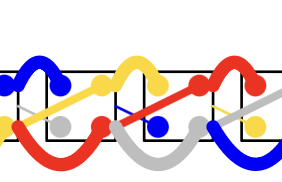
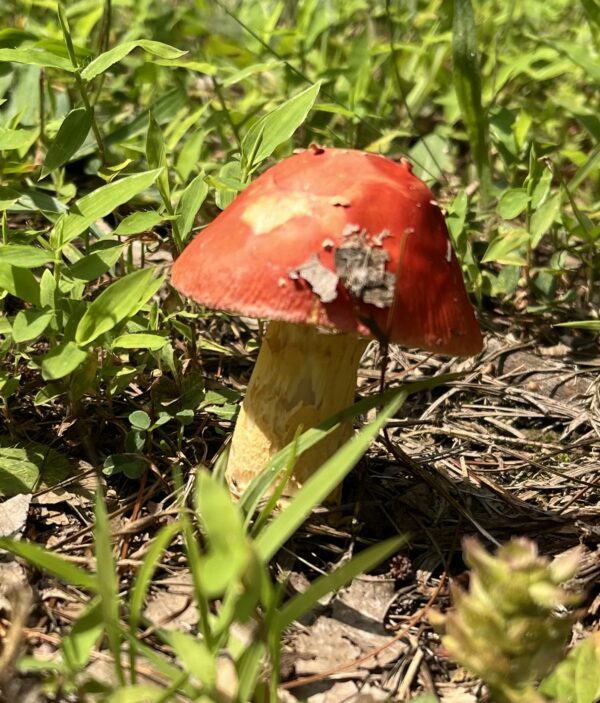
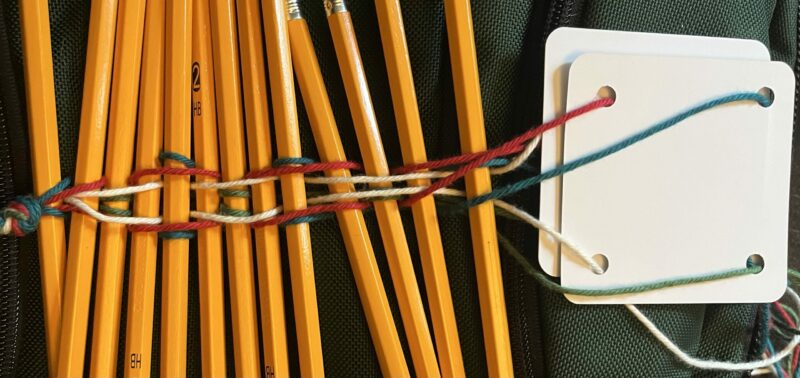
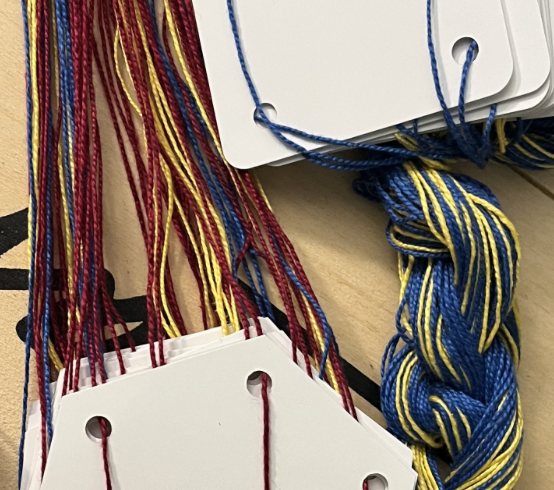
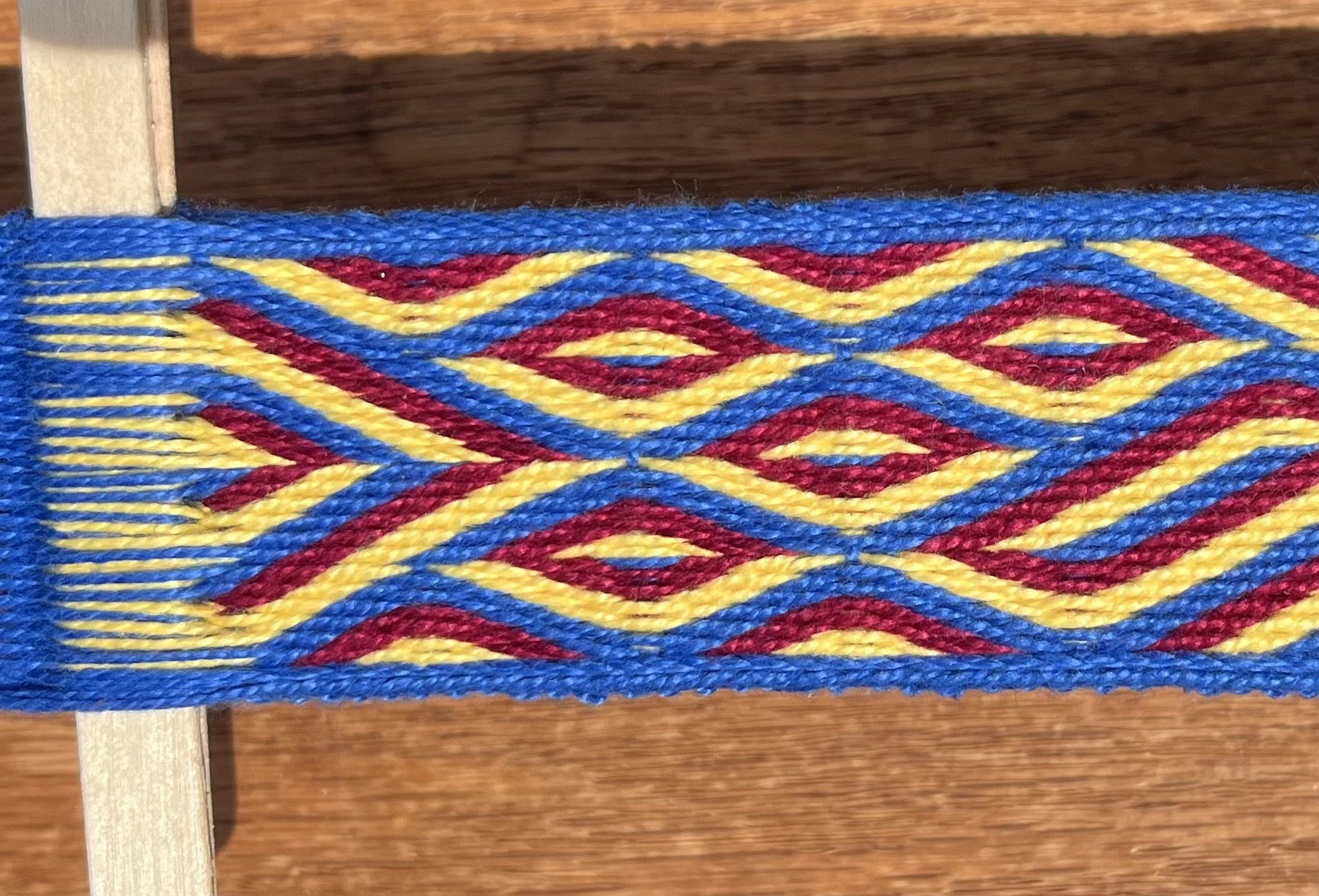
9 responses to “Sprang sashes”
A multistory sprang machine could make a bunch of sashes, and if you cut the warp apart at the center, you could have four or six or however many sashes, none of them with a twining reversal. I seem to have the impression that Peter Collingwood mentioned that they were commercially-produced, but I don’t think he had details. If the warp was on a sort of spreader to keep things in position, it might be possible to use something that operated like a knitting frame. I can’t think how you’d beat down the rows, though! What’s that 18th century encyclopedia–Diderot? I wonder if there are pictures in that?
Um. The general consensus seems to be that the machines are fictional.
Oh, darn. They should exist. :)Wouldn’t a giant water-powered spranger be so cool? Belts and pulleys and gears and everything.
It would be interesting to see what the setups were really like–some of the sashes were really long, and it seems like it would have been cumbersome to deal with.
Would really love to learn sprang someday, it looks very interesting!
Didn’t know about GW and the military sashes and sprang–now I will be taking a closer look at those portraits!
Great post- thank you!
I spranged a small tight sample like that and it corkscrewed badly too. I’ve just been doing small samples. Practicing basically as I’m new to spranging but also hoping to work up to sash lengths for a re-enactor friend.
I’ve been using even numbers but divisible by 3. The odd number is interesting. Following this!
Thank you for posting this. I’m starting to explore sprang and your sample looks like something I want to try.
Have a good day!
Franco Rios
Hi there, For a couple of years I’ve been making wool yarn sprang sashes for friend’s who do Napoleonic re-enactment here in the UK (68th DLI, 2nd 95th Rifles, 33rd Reg). It’s VERY time consuming! I use a circular warp frame to make a sash 9ft with 1ft (12inch) knotted fringe. I have heard that Wydean Weaving here in the UK have a sprang machine but don’t know how to use it.
Would love to know more about the Multistorey sprang machine.
Anne x x
I’ve had a number of these “sprang work” sashes made up. If you’d like to see some photos, of the work, I’ll be glad to send them on.
Beau
I’d like that, Beau.